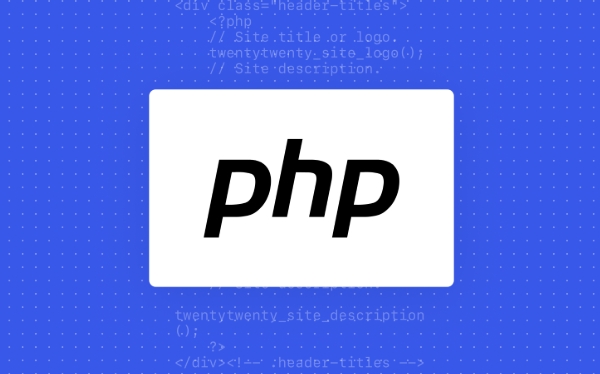Dynamic Key-Value Pair Injection in PHP Associative Arrays
Aug 02, 2025 pm 03:06 PMUse variable keys for dynamic assignment by setting $array[$key] = $value with runtime variables, ensuring keys from untrusted sources are sanitized. 2. Merge multiple key-value pairs at once using array_merge($base, [$key => $value]), noting it overwrites existing keys and reindexes numeric ones. 3. Inject existing variables into an array using compact('var1', 'var2') to dynamically create an associative array from variable names. 4. Handle nested arrays by checking parent key existence with isset() or using null coalescing assignment $config[$section] ??= [] before injecting sub-keys. 5. When processing external data like $_POST, loop through input and inject only whitelisted keys after sanitizing values to prevent security risks. Always validate dynamic keys, check key existence before overwriting, use bracket syntax for assignment, and consider array_replace_recursive() for deep merging, ensuring safe and predictable dynamic array population.

Injecting key-value pairs dynamically into PHP associative arrays is a common task when building flexible applications—such as configuration systems, form processors, or API response handlers. PHP’s array handling makes this straightforward, but doing it safely and efficiently requires understanding a few core techniques.

1. Using Variable Keys for Dynamic Assignment
The most basic way to inject a key-value pair dynamically is by using variables as array keys. This allows you to set both the key and value at runtime.
$key = 'username'; $value = 'john_doe'; $array = []; $array[$key] = $value; // Result: ['username' => 'john_doe']
This works with user input, loop-generated keys, or data from external sources:

foreach ($formData as $field => $input) {
$cleanData['user_' . $field] = trim($input);
}Just ensure keys are sanitized or validated if they come from untrusted sources to avoid unexpected behavior.
2. Merging Arrays with array_merge()
When you need to inject multiple key-value pairs at once, array_merge() is ideal:

$base = ['name' => 'Alice', 'age' => 30]; $extras = ['city' => 'Berlin', 'active' => true]; $merged = array_merge($base, $extras); // Result: ['name' => 'Alice', 'age' => 30, 'city' => 'Berlin', 'active' => true]
You can also inject a single pair using an inline array:
$key = 'country'; $value = 'Canada'; $base = array_merge($base, [$key => $value]);
Note: array_merge() reindexes numeric keys and overwrites existing string keys. If you want to preserve existing values, consider checking with array_key_exists() first.
3. Using compact() for Variable-to-Key Injection
If your variables already exist in scope, compact() lets you build an associative array dynamically from variable names:
$status = 'published';
$priority = 'high';
$tags = ['php', 'tutorial'];
$meta = compact('status', 'priority', 'tags');
// Result: ['status' => 'published', 'priority' => 'high', 'tags' => ['php', 'tutorial']]This is useful in functions where you want to collect several related variables without manually assigning each.
4. Handling Nested Arrays
For deeper structures, you might need to inject key-value pairs into nested arrays:
$config = ['database' => ['host' => 'localhost']]; // Dynamic nested injection $section = 'database'; $subKey = 'port'; $subValue = 3306; $config[$section][$subKey] = $subValue;
To avoid warnings if the parent key doesn’t exist, initialize it first:
if (!isset($config[$section])) {
$config[$section] = [];
}
$config[$section][$subKey] = $subValue;Or use null coalescing assignment (PHP 7.4 ):
$config[$section] ??= []; $config[$section][$subKey] = $subValue;
5. Dynamic Injection from External Data (e.g., POST, JSON)
When processing input, you often need to selectively inject sanitized values:
$safeKeys = ['title', 'content', 'category'];
$inputData = $_POST; // Or JSON input
foreach ($inputData as $key => $value) {
if (in_array($key, $safeKeys)) {
$article[$key] = htmlspecialchars(trim($value));
}
}This combines dynamic key usage with security filtering.
Key Tips:
- Always validate or whitelist dynamic keys when they come from user input.
- Use
isset()orarray_key_exists()to check before overwriting. - Prefer
[]syntax for appending or assigning—clean and efficient. - For complex merging, consider
array_replace_recursive()if dealing with nested structures.
Basically, dynamic key-value injection in PHP is simple thanks to flexible arrays, but staying safe and predictable means paying attention to source data and structure depth.
The above is the detailed content of Dynamic Key-Value Pair Injection in PHP Associative Arrays. For more information, please follow other related articles on the PHP Chinese website!

Hot AI Tools

Undress AI Tool
Undress images for free

Undresser.AI Undress
AI-powered app for creating realistic nude photos

AI Clothes Remover
Online AI tool for removing clothes from photos.

Clothoff.io
AI clothes remover

Video Face Swap
Swap faces in any video effortlessly with our completely free AI face swap tool!

Hot Article

Hot Tools

Notepad++7.3.1
Easy-to-use and free code editor

SublimeText3 Chinese version
Chinese version, very easy to use

Zend Studio 13.0.1
Powerful PHP integrated development environment

Dreamweaver CS6
Visual web development tools

SublimeText3 Mac version
God-level code editing software (SublimeText3)

Hot Topics
 php regex for password strength
Jul 03, 2025 am 10:33 AM
php regex for password strength
Jul 03, 2025 am 10:33 AM
To determine the strength of the password, it is necessary to combine regular and logical processing. The basic requirements include: 1. The length is no less than 8 digits; 2. At least containing lowercase letters, uppercase letters, and numbers; 3. Special character restrictions can be added; in terms of advanced aspects, continuous duplication of characters and incremental/decreasing sequences need to be avoided, which requires PHP function detection; at the same time, blacklists should be introduced to filter common weak passwords such as password and 123456; finally it is recommended to combine the zxcvbn library to improve the evaluation accuracy.
 PHP Variable Scope Explained
Jul 17, 2025 am 04:16 AM
PHP Variable Scope Explained
Jul 17, 2025 am 04:16 AM
Common problems and solutions for PHP variable scope include: 1. The global variable cannot be accessed within the function, and it needs to be passed in using the global keyword or parameter; 2. The static variable is declared with static, and it is only initialized once and the value is maintained between multiple calls; 3. Hyperglobal variables such as $_GET and $_POST can be used directly in any scope, but you need to pay attention to safe filtering; 4. Anonymous functions need to introduce parent scope variables through the use keyword, and when modifying external variables, you need to pass a reference. Mastering these rules can help avoid errors and improve code stability.
 How to handle File Uploads securely in PHP?
Jul 08, 2025 am 02:37 AM
How to handle File Uploads securely in PHP?
Jul 08, 2025 am 02:37 AM
To safely handle PHP file uploads, you need to verify the source and type, control the file name and path, set server restrictions, and process media files twice. 1. Verify the upload source to prevent CSRF through token and detect the real MIME type through finfo_file using whitelist control; 2. Rename the file to a random string and determine the extension to store it in a non-Web directory according to the detection type; 3. PHP configuration limits the upload size and temporary directory Nginx/Apache prohibits access to the upload directory; 4. The GD library resaves the pictures to clear potential malicious data.
 Commenting Out Code in PHP
Jul 18, 2025 am 04:57 AM
Commenting Out Code in PHP
Jul 18, 2025 am 04:57 AM
There are three common methods for PHP comment code: 1. Use // or # to block one line of code, and it is recommended to use //; 2. Use /.../ to wrap code blocks with multiple lines, which cannot be nested but can be crossed; 3. Combination skills comments such as using /if(){}/ to control logic blocks, or to improve efficiency with editor shortcut keys, you should pay attention to closing symbols and avoid nesting when using them.
 How Do Generators Work in PHP?
Jul 11, 2025 am 03:12 AM
How Do Generators Work in PHP?
Jul 11, 2025 am 03:12 AM
AgeneratorinPHPisamemory-efficientwaytoiterateoverlargedatasetsbyyieldingvaluesoneatatimeinsteadofreturningthemallatonce.1.Generatorsusetheyieldkeywordtoproducevaluesondemand,reducingmemoryusage.2.Theyareusefulforhandlingbigloops,readinglargefiles,or
 Tips for Writing PHP Comments
Jul 18, 2025 am 04:51 AM
Tips for Writing PHP Comments
Jul 18, 2025 am 04:51 AM
The key to writing PHP comments is to clarify the purpose and specifications. Comments should explain "why" rather than "what was done", avoiding redundancy or too simplicity. 1. Use a unified format, such as docblock (/*/) for class and method descriptions to improve readability and tool compatibility; 2. Emphasize the reasons behind the logic, such as why JS jumps need to be output manually; 3. Add an overview description before complex code, describe the process in steps, and help understand the overall idea; 4. Use TODO and FIXME rationally to mark to-do items and problems to facilitate subsequent tracking and collaboration. Good annotations can reduce communication costs and improve code maintenance efficiency.
 Quick PHP Installation Tutorial
Jul 18, 2025 am 04:52 AM
Quick PHP Installation Tutorial
Jul 18, 2025 am 04:52 AM
ToinstallPHPquickly,useXAMPPonWindowsorHomebrewonmacOS.1.OnWindows,downloadandinstallXAMPP,selectcomponents,startApache,andplacefilesinhtdocs.2.Alternatively,manuallyinstallPHPfromphp.netandsetupaserverlikeApache.3.OnmacOS,installHomebrew,thenrun'bre
 Learning PHP: A Beginner's Guide
Jul 18, 2025 am 04:54 AM
Learning PHP: A Beginner's Guide
Jul 18, 2025 am 04:54 AM
TolearnPHPeffectively,startbysettingupalocalserverenvironmentusingtoolslikeXAMPPandacodeeditorlikeVSCode.1)InstallXAMPPforApache,MySQL,andPHP.2)Useacodeeditorforsyntaxsupport.3)TestyoursetupwithasimplePHPfile.Next,learnPHPbasicsincludingvariables,ech






